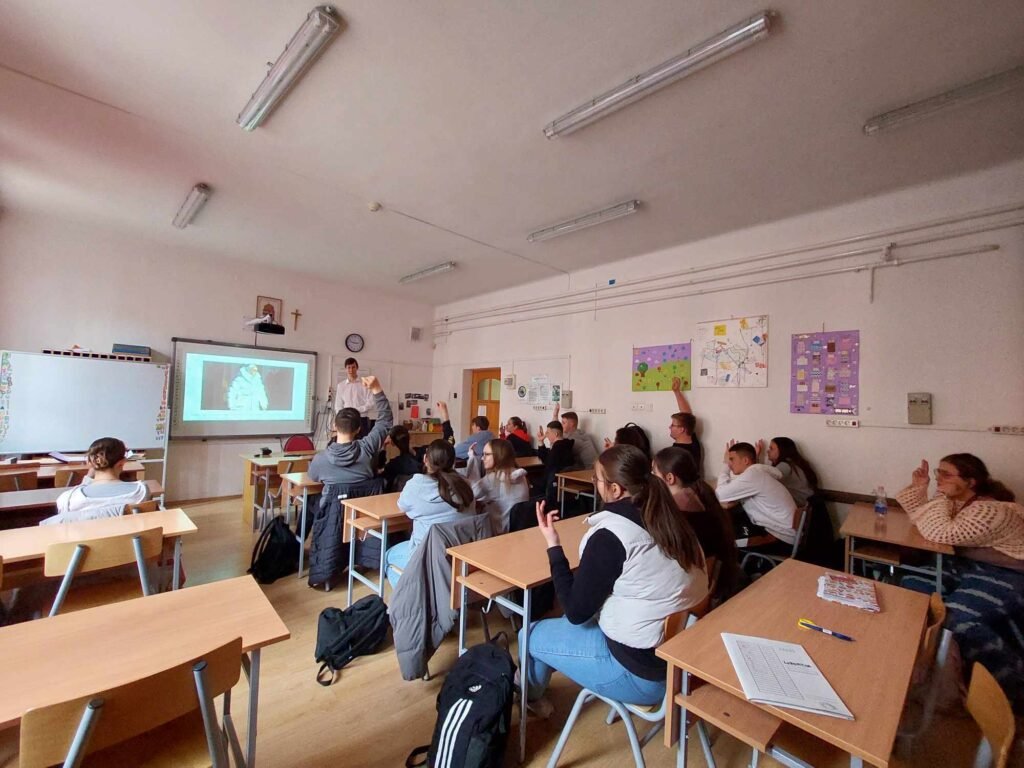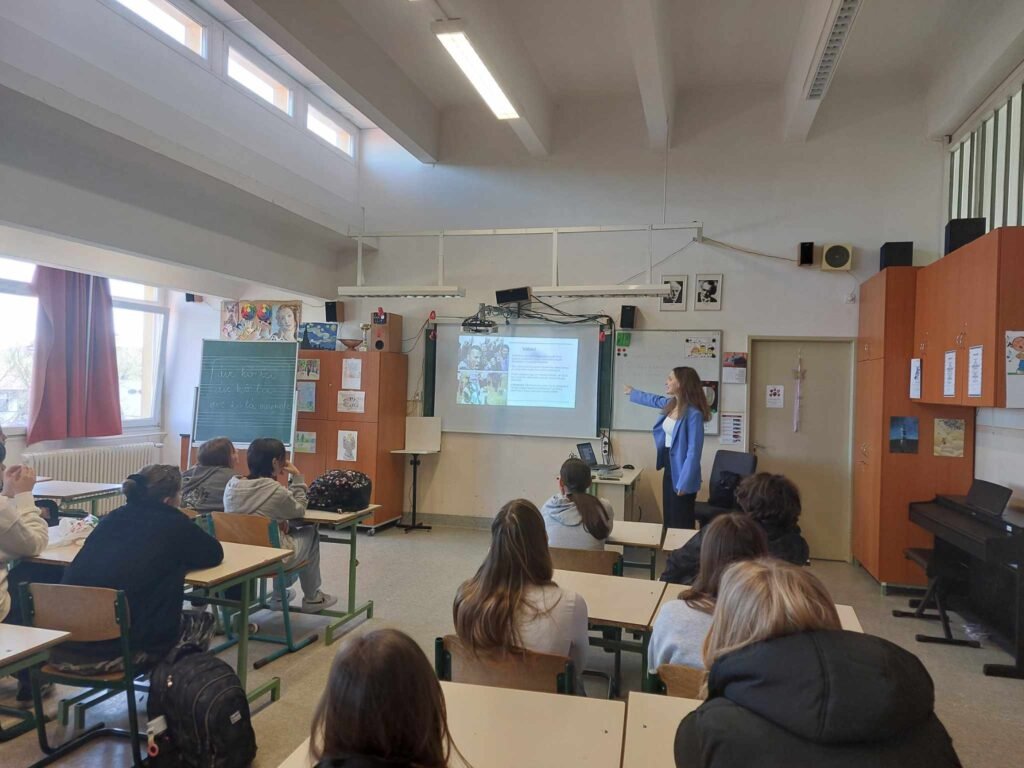We visited 10 Hungarian educational institutions to improve media literacy using our finding in the United Kingdom, Ireland and the Netherlands.
We did presentations at primary schools, 6-year high schools and classic 4-year high schools. We were very careful in how we did our job, giving talks in English and Hungarian language so that all kinds of listeners could understand us well.
The way we presented was like going deep into media literacy, giving students the methods to think with great care about all the many media they see every day. We showed them how to know if something is real news or not and understand what kind of content might mislead them. They also learned more about how audio, video and images can be changed or altered – this helped build a good questioning attitude towards where information comes from.
For making sure our presentations were interesting and not just informative, we carefully put together interactive parts with intriguing real-life instances. The reactions from students and teachers were very enthusiastic which gives a clear confirmation of the success in our method.
Emphasizing the significance of fact-checking, our presentation highlighted this as a crucial aspect. We gave students useful advice on confirming the reliability of news providers, giving them tools to recognize truth from falsehood in today’s digital world that is often confusing and misleading.
Below you can see pictures from these lectures and workshops we have done.









